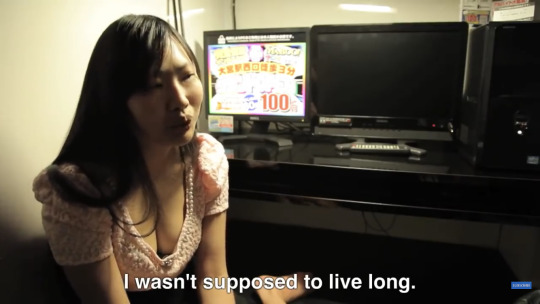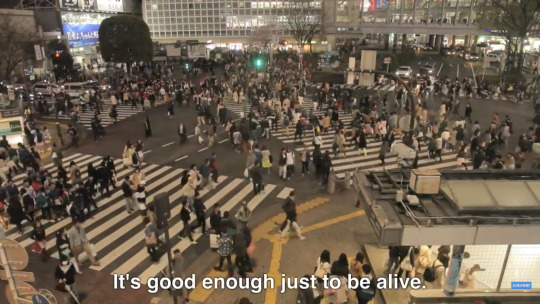Text
trust issues? yeah I trust people too much, that's my issue
2 notes
·
View notes
Note
Hello, how are you dear?. I hope you are safe and happy. I want to thank you for validating me when I had no one I could share my trauma with. I'm this person I hope it shows up I don't know how to link something on Tumblr and please sorry for my bad English it's not my first language. https://www.tumblr.com/agirldying/662983068502622208/hey-i-want-to-ask-if-what-i-have-gone-through
Hi there,
It's a pleasure to hear from you again! I'm glad that you were not only able to find my blog and take advantage of this resource, but that you benefited from it as well! And no need to apologize, you make perfect sense. My inbox is empty if you ever need someone to talk to!
6 notes
·
View notes
Text
i know healing isn't linear and everything but i feel like im in the "final stages" and honestly i almost didn't expect to feel this great ever again
#and then when i have my next mental breakdown i will retract this statement LMAO#text#may delete#vent
9 notes
·
View notes
Text
Grounding Help
Grounding is a practice that can help you pull away from flashbacks, unwanted memories, and negative or challenging emotions. These techniques may help distract you from what you're experiencing and refocus on what's happening in the present moment. You can use grounding techniques to help create space from distressing feelings in nearly any situation from text anxiety to concerns about self harm.
Physical techniques: these techniques use your five senses or tangible objects to help you move through distress.
1. Put your hands in water. Focus on the water's temperature and how it feels on your fingertips, palms, and the backs of your hands. Does it feel the same in each part of your hand? Use warm water first, then cold. Next, try cold water first, then warm. Does it feel different to switch from cold to warm water versus warm to cold?
2. Pick up or touch items near you. Are things you touch soft or hard? Heavy or light? Warm or cool? Focus on the texture and color of each item. Challenge yourself to think of specific colors, such as chrimson, burgundy, indigo, or turquoise, instead of simply red or blue.
3. Breathe deeply. Slowly inhale, then exhale. If it helps, you can say or think "in" and "out" with each breath. Feel each breath filling your lungs and note how it feels to push it back out.
4. Savor a food or drink. Take small bites or sips of a food or beverage you enjoy, letting yourself fully taste each bite. Think about how it tastes and smells and the flavors that linger on your tongue (and this is my note, just be wary of how people with EDs may be triggered by this).
5. Take a short walk. Concentrate on your steps - you can even count them. Notice the rhythm of your footsteps and how it feels to put your foot on the ground and then lift it again.
6. Hold a piece of ice. What does it feel like at first? How long does it take to start melting? How does the sensation change when the ice begins to melt?
7. Savor a scent. Is there a fragrance that appeals to you? This might be a cup of tea, an herb or spice, a favorite soap, or a scented candle. Inhale the fragrance slowly and deeply and try to note its qualities (sweet, spicy, sharp, citrussy, and so on).
8. Move your body. Do a few exercises or stretches. You could try jumping jacks, jumping up and down, jumping rope, jogging in place, or stretching different muscle groups one by one. Pay attention to how your body feels with each movement and when you hands or feet touch the floor or move through the air. How does the floor feel against your feet and hands? If you jump rope, listen to the sound of the rope in the air and when it hits the ground.
9. Listen to your surroundings. Take a few moments to listen to the noises around you. do you hear birds? Dogs barking? Machinery or traffic? If you hear people talking, what are they saying? Do you recognize the language? Let the sounds wash over you and remind you where you are.
10. Feel your body. You can do this by sitting or standing. Focus on how your body feels from head to toe, noticing each part. Can you feel your hair on your shoulders or forehead? Glasses on your ears or nose? The weight of your shirt on your shoulders? Do your arms feel loose or stiff at your sides? Can you feel your heartbeat? Is it rapid or steady? Does your stomach feel full, or are you hungry? Are your legs crossed, or are your feet resting on the floor? Is your back straight? Curl your fingers and wiggle your toes. Are you barefoot or in shoes? How does the floor feel against your feet?
11. Try the 5-4-3-2-1 method. Working backward from 5, use your senses to list things you notice around you. For example, you might start by listing five things you hear, then four things you see, then three things you can touch from where you're sitting, two things you can smell, and one thing you can taste. Make an effort to notice the little things you might not always pay attention to, such as the color of the flecks in the carpet or the hum of your computer.
Mental techniques: these grounding techniques use mental distractions to help redirect your thoughts away from distressing feelings and back to the present.
12. Play a memory game: Look at a detailed photograph or picture (like a cityscape or other "busy" scene) for 5 to 10 seconds. Then, turn the photograph face-down and recreate the photograph in your mind, in as much detail as possible. Or, you can mentally list all the things you remember from the picture.
13. Think in categories. Choose one or two broad categories, such as "musical instruments," "ice cream flavors," "mammals," or "baseball teams." Take a minute or two to mentally list as many things from each category as you can.
14. Use math and numbers. Even if you aren't a math person, numbers can help center you. Try these: running through a times table in your head, counting backward from 100, choosing a number and thinking of five ways you could make the number (6 + 11 = 17, 20-3 = 17, etc.)
15. Recite something. Think of a poem, song, or book passage you know by heart. Recite it quietly to yourself or in your head. If you say the words aloud, focus on the shape of each word on your lips and in your mouth. If you say the words in your head, visualize each word as you'd see it on a page.
16. Make yourself laugh. Make up a silly joke - the kind you'd find on a candy wrapper or a popsicle stick. You might also make yourself laugh by watching your favorite funny animal video, a clip from a comedian or TV show you enjoy, or anything else you know will make you laugh.
17. Use an anchoring phrase. This might be something like, "I'm Full Name. I'm X years old I live in City, State. Today is Friday, June 3. It's 10:04 in the morning. I;m sitting at my desk at work. There's no one else in the room." You can expand on the phrase by adding details until you feel calm, such as, "It's raining lightly, but I can still see the sun. It's my break time. I'm thirsty, so I'm going to make a cup of tea."
18. Visualize a daily task you enjoy or don't mind doing. If you like doing laundry, for example, think about how you'd put away a finished load. "The clothes feel warm coming out of the dryer. They're soft and a little stiff at the same time. They feel light in the basket, even though they spill over the top. I'm spreading them out over the bed so they won't wrinkle. I'm folding the towels first, shaking them out before folding them into halves, then thirds," and so on.
19. Describe a common task. Think of an activity you do often or can do very well, such as making coffee, locking up your office, or tuning a guitar. Go through the process of step-by-step, as you're giving someone else instructions on how to do it.
20. Imagine yourself leaving the painful feelings behind. Picture yourself: gathering the emotions, balling them up, and putting them into a box, walking, swimming, biking, or jogging away from painful feelings, imagining your thoughts as a song or TV show you dislike, changing the channel or turning down the volume - they're still there, but you don't have to listen to them.
21. Describe what's around you. Spend a few minutes taking in your surroundings and noting what you see. Use all five senses to provide as much detail as possible. "This bench is red, but the bench over there is green. It's warm under my jeans since I'm sitting in the sun. It feels rough, but there aren't any splinters. The grass is yellow and dry. The air smells like smoke. I hear kids having fun and two dogs barking."
Soothing techniques: you can use these techniques to comfort yourself in times of emotional distress. These exercises can help promote good feelings that may help the negative feelings fade or seem less overwhelming.
22. Picture the voice or face of someone you love. If you feel upset or distressed, visualize someone positive in your life. Imagine their face or think of what their voice sounds like. Imagine them telling you that the moment is tough, but that you'll get through it.
23. Practice self-kindness. Repeat kind, compassionate phrases to yourself. You're having a rough time, but you'll make it through." "You're strong, and you can move through this pain." "You're trying hard, and you're doing your best." Say it, either aloud or in your head, as many times as you need.
24. Sit with your pet. If you're at home and have a pet, spend a few moments just sitting with them. If they're of the furry variety, pet them, focusing on how their fur feels. Focus on their markings or unique characteristics. If you have a smaller pet you can hold, concentrate on how they feel in your hand. Not at home? Think of your favorite things about your pet or how they would comfort you if they were there.
25. List favorites. List three favorite things in several different categories, such as foods, trees, songs, movies, books, places, and so on.
26. Visualize your favorite place. Think of your favorite place, whether it's the home of a loved one or a foreign country. Use all of your senses to create a mental image. Think of the colors you see, sounds you hear, and sensations you feel on your skin. Remember the last time you were there. Who were you with, if anyone? What did you do there? How did you feel?
27. Plan an activity. This might be something you do alone or with a friend or loved one. Think of what you'll do and when. Maybe you'll go to dinner, take a walk on the beach, see a movie you've been looking forward to, or visit a museum. Focus on the details, such as what you'll wear, when you'll go, and how you'll get there.
28. Touch something comforting. This could be your favorite blanket, a much-loved T-shirt, a smooth stone, a soft carpet, or anything that feels good to touch. Think about how it feels under your fingers or in your hand. If you have a favorite sweater, scarf, or pair of socks, put them on and spend a moment thinking about the sensation of the fabric on your skin.
29. List positive things. Write or mentally list four or five things in your life that bring you joy, visualizing each of them briefly.
30. Listen to music. Put on your favorite song, but pretend you're listening to it for the first time. Focus on the melody and the lyrics (if there are any) Does the song give you chills or create any other physical sensations? Pay attention to the parts that stand out the most to you.
Additional tips: Grounding yourself isn't always easy. It may take some time before the techniques work well for you, but don't give up on them. Grounding techniques can be powerful tools to help you cope with distressing thoughts in the moment. But the relief they provide is generally temporary.
(ripped this from a sheet my therapist gave me, this is not original but idk who wrote this)
32 notes
·
View notes
Note
Hi there. I’m Kristy, from Australia.
I just wanted to say thank you for being so open and honest about your trauma. I’ve only just become aware of trauma based blogs like yours here on tumblr even though I’ve been around for a long time.
I’m really struggling, to be honest. I went through a lot of CSA and experienced a SA in my early 30’s. Now, at the age of 38, I feel like I can’t cope anymore.
Anyway, I won’t go on about it because the intention of my ask was to say thank you. You are a real breath of fresh air and I appreciate you.
I hope you have a nice day.
Kristy 🌻
Hey Kristy,
I wasn't sure whether or not you're aware that I'm Bun lol but thank you so much, it means a lot to me to know I'm actually making an impact and it's easy for me to lose sight of that. You don't have to tell me anything you don't want to of course but I'm always a listening ear if you have something on your mind.
2 notes
·
View notes
Note
hello! just checking up on you
how are you doing? at the end of the day i'm not sure there's much i can do but take this as s little "i care"
Aw hi etoilause, it's such a pleasure to hear from you.
I've honestly not been doing too great the past few weeks but today was a very good day. The house was cleaned, I showered, I had vietnamese with my mom, I had an interview to work as a case manager at a women's shelter, and just an hour ago I got a call back saying that I got the job! I'm so honored and excited. This will mean that my presence on @traumasurvivorshelpingsurvivors is probably going to take a major cut (but maybe it's for the best, I could use a break lol).
If you ever wanna chat with me at any time please feel free to message me, I'd love to hear how you're doing and what you've been up to as well <3
3 notes
·
View notes
Text
i feel like everyone else moves ahead through time and i'm left behind in 2014. i feel like there's only an ever-widening gap between me and everyone around me. and when i go to vent to certain people about my issues (which are in 2014) i get "that was so long ago" "get over it already". i feel so isolated sometimes. and it's not like i wish anyone else were stuck like i am but? is it weird to say i wish i had more friends with ptsd? who understand what it's like to be frozen in time?
7 notes
·
View notes















